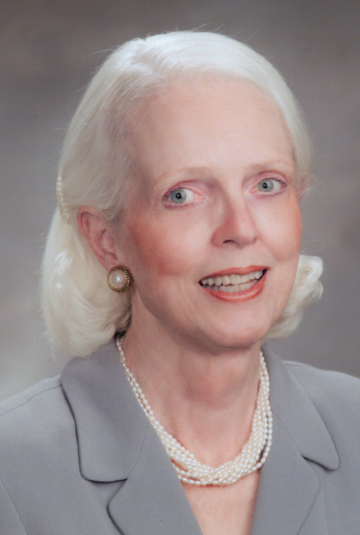Dr. Selma Calmes, Polio Survivor, Shares Her Story at IARS 2023

April 26, 2023 | Jane Moon, MD
A severe polio epidemic in Copenhagen, Denmark, inspired the creation of the first intensive care unit (ICU) just a few years after Selma Calmes, MD, was hospitalized with polio in Los Angeles, California. Dr. Calmes, Retired Clinical Professor of the Department of Anesthesiology and Perioperative Medicine at UCLA and Retired Chief of Anesthesiology of Olive View-UCLA Medical Center, overcame great hardship—physical, mental, emotional, and financial—to pursue a career in medicine during a time when only 6% of all physicians in the United States were women.
Dr. Calmes gave a moving account of her own experience with childhood polio and adult post-polio syndrome in a pre-recorded interview during the IARS 2023 Annual Meeting’s International Science Symposium entitled “Impact of Innovation and Technology in Critical Care: Past and Future.” The session was moderated by Beverley Orser, MD, PhD, Chair of Anesthesiology and Pain Medicine at the University of Toronto. The other panelists were Hannah Wunsch, MD, MSc, Professor of Anesthesiology and Pain Medicine at the University of Toronto, and James Blum, MD, FCCM, Chief Medical Information Officer at the University of Iowa.
In 1948, when Dr. Calmes was eight years old, a polio epidemic began to ravage her town of Long Beach, California. “I couldn’t get up out of bed,” she said, recalling her presenting symptom. Her family physician visited her at home, performed a physical exam that included the nuchal rigidity test, and then directed her to go to the Los Angeles County Hospital, where new polio patients had to be quarantined for two weeks.
Dr. Calmes had bleak memories of her hospitalization, first at the County Hospital, then at a local facility near her house in Long Beach. She recalled initially undergoing a spinal tap by two male interns in a “very dark” room with poor lighting. After the procedure, she was sent to a floor that was “just packed with polio cases.”
“I was a very feisty kid, and I decided I was going to run away from the hospital,” she said. The nurses were distraught when she “fell in a heap on the floor.”
Although Dr. Calmes did not have respiratory failure due to polio, both her legs were paralyzed, and she could not walk for a long period of time. For around two years after her initial diagnosis, Dr. Calmes had to use crutches, and it took even longer for her to be able to run.
Dr. Calmes credited her interest in medicine to being hospitalized as a child, although she felt discouraged about how difficult and expensive her education would be. She expressed gratitude for her college organic chemistry teacher, who encouraged her and helped her complete the admissions process for Baylor College of Medicine in Houston. Dr. Calmes’ mother “took out a second mortgage on her house” to help pay for her daughter’s medical school tuition.
Dr. Wunsch, Dr. Calmes’ interviewer and co-panelist, asked about how the practice of anesthesiology had evolved over her career. Dr. Calmes shared that at the main University of Pennsylvania hospital where she completed her residency training, there was “a very rigid schedule of [intravenous] pentothal and nitrous [oxide] and ether by mask.” She learned to use halothane, which provided a faster and smoother induction, only after being trained to use ether.
Dr. Calmes also described a general lack of monitoring equipment for a significant portion of her career. EKGs, pulse oximeters, arterial blood gas analyzers were scarce resources.
She then shared her disappointment with developing debilitating symptoms of post-polio syndrome after becoming a department chair. “I had ignored polio for such a long time,” she said. She began to have worsening muscle weakness, especially of her arms, which were not as affected when she had polio as a child. The arm debility also caused neck problems, and her overall stamina declined significantly.
As words of parting advice to the younger generation of physicians, Dr. Calmes encouraged everyone to “recognize the effect of disease on our patients.” She emphasized the value of the postoperative visit in communicating a commitment to patients and families as whole people. “It’s so easy to get lost in the things we have to do, but we’re here to take care of the patients and give them the best experience possible,” she said.
This is an excerpt from a longer article about the IARS Session “Impact of Innovation and Technology in Critical Care: Past and Future.” The full article can be read here.